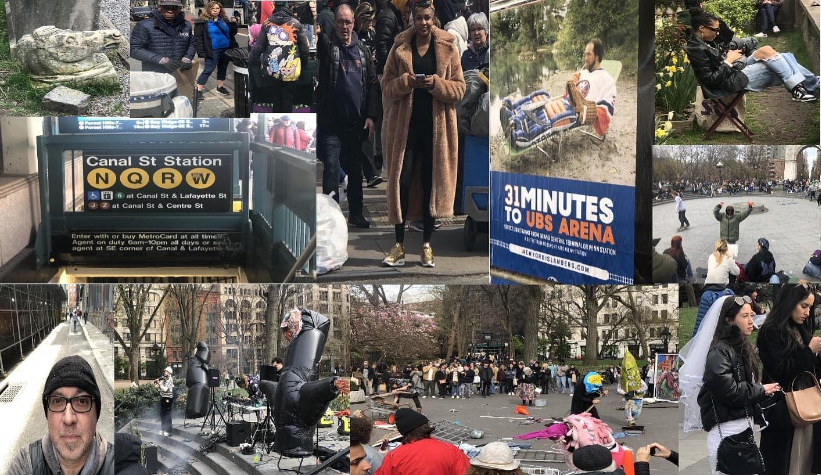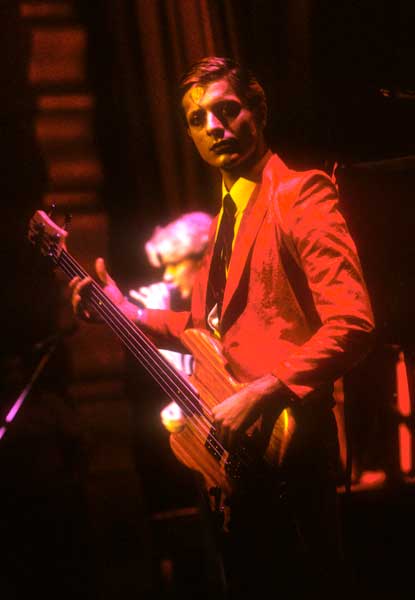𝕋𝕠𝕞 𝕊𝕖𝕞𝕚𝕠𝕝𝕚 𝕚ℙ𝕙𝕠𝕟𝕖 ℙ𝕙𝕠𝕥𝕠-ℂ𝕠𝕝𝕝𝕒𝕘𝕖𝕤…
MY #LIC 6 September 2025

MY #NYC 1 September 2025: Empty streets of SoHo at dusk on a holiday weekend. Tourists departed on their flights home…bridge ‘n’ tunnel revelers back to the boroughs and ‘burbs. Just us natives… peace in the neighborhood… for now.

MY #NYC 1.1 September 2025: “There are no stars in the New York City sky…they’re all on the ground…” Andrew Warhola

𝐌𝐘 #𝐍𝐘𝐂 𝟑𝟎 𝐀𝐮𝐠𝐮𝐬𝐭 𝟐𝟎𝟐𝟓: “𝐈𝐟 𝐲𝐨𝐮 𝐰𝐚𝐧𝐭 𝐭𝐨 𝐟𝐞𝐞𝐥 𝐦𝐞 𝐛𝐞𝐭𝐭𝐞𝐫 𝐛𝐞 𝐝𝐢𝐯𝐢𝐧𝐞. 𝐁𝐫𝐢𝐧𝐠 𝐦𝐞 𝐰𝐚𝐭𝐞𝐫, 𝐰𝐚𝐭𝐞𝐫 𝐟𝐨𝐫 𝐦𝐲 𝐦𝐢𝐧𝐝…” 𝐄𝐫𝐢𝐜𝐚 𝐀𝐛𝐢 𝐖𝐫𝐢𝐠𝐡𝐭 
𝗠𝗬 #𝗡𝗬𝗖 𝟮𝟵 𝗔𝘂𝗴𝘂𝘀𝘁 𝟮𝟬𝟮𝟱: “𝗛𝗲𝘆 𝗺𝗮𝗻, 𝘄𝗵𝗮𝘁’𝘀 𝘆𝗼𝘂𝗿 𝘀𝘁𝘆𝗹𝗲? 𝗛𝗼𝘄 𝗱𝗼 𝘆𝗼𝘂 𝗴𝗲𝘁 𝘆𝗼𝘂𝗿 𝗸𝗶𝗰𝗸𝘀 𝗳𝗼𝗿 𝗹𝗶𝘃𝗶𝗻𝗴? 𝗛𝗲𝘆 𝗺𝗮𝗻, 𝘄𝗵𝗮𝘁’𝘀 𝘆𝗼𝘂𝗿 𝘀𝘁𝘆𝗹𝗲? 𝗛𝗼𝘄 𝗱𝗼 𝘆𝗼𝘂 𝗴𝗲𝘁 𝘆𝗼𝘂𝗿 𝗮𝗱𝗿𝗲𝗻𝗮𝗹𝗶𝗻𝗲 𝗳𝗹𝗼𝘄𝗶𝗻𝗴 𝗻𝗼𝘄?” Lewis Allan Reed

MY #NYC 26.3 August 2025: “I was staring through a telescope at night at a large light in the sky. Its spinning lights reminded me of you. A star spinning in orbit lighting up the sky…” Lewis Allan Reed

MY #NYC 26.2 August 2025: “See myself in the pouring home. See the light, come over now. I see myself in the pouring rain. I watch hope come over me…” Richard Melville Hall

MY #NYC 26.1 August 2025 “Although you think I’m sleeping as you get ready to leave. I can see your shadow packing from underneath my sleeve. And there you go and yes I know, I’ll always be the same. Well thanks for looking in on me – I’m really glad you came…” Ian Robbins Dury

MY #PORTLANDORE July 2025 
MY #PORTLANDORE July 2025 
MY #PORTLANDORE July 2025 
MY #PORTLANDORE July 2025 
MY #NYC 6 July 2025: “Well, she was walkin’ down the street. Lookin’ fine as she could be. She’s about a mover….” Douglas Wayne Sahm

MY #NYC 4 July 2025: “Face the face, got to face the face. Face the face, got to face the face. You must have heard the cautionary tales. The dangers hidden on the cul-de-sac trails. From wiser folk who’ve been through it all and the faded name sprayed up on the wall…” Peter Dennis Blandford Townshend

MY #NYC 2 July 2025: ”I am sitting in the morning at the diner on the corner. I am waiting at the counter… for the man to pour the coffee….” Suzanne Vega

𝐌𝐘 #𝐍𝐘𝐂 𝟑 𝐉𝐮𝐥𝐲 𝟐𝟎𝟐𝟓: “𝐇𝐚𝐯𝐞 𝐲𝐨𝐮 𝐬𝐞𝐞𝐧 𝐡𝐞𝐫 𝐟𝐚𝐜𝐞? 𝐇𝐞𝐫 𝐞𝐲𝐞𝐬 𝐫𝐞𝐟𝐥𝐞𝐜𝐭 𝐭𝐡𝐞 𝐜𝐨𝐥𝐨𝐫𝐬 𝐢𝐧 𝐭𝐡𝐞 𝐬𝐤𝐲. 𝐀 𝐰𝐚𝐫𝐦 𝐟𝐚𝐦𝐢𝐥𝐢𝐚𝐫 𝐩𝐥𝐚𝐜𝐞. 𝐓𝐨 𝐛𝐞 𝐬𝐰𝐞𝐩𝐭 𝐢𝐧𝐭𝐨 𝐰𝐡𝐞𝐧𝐞𝐯𝐞𝐫 𝐬𝐡𝐞’𝐬 𝐜𝐥𝐨𝐬𝐞 𝐛𝐲. 𝐌𝐚𝐤𝐞𝐬 𝐦𝐞 𝐰𝐨𝐧𝐝𝐞𝐫 𝐰𝐡𝐲. 𝐑𝐮𝐧 𝐛𝐲, 𝐝𝐨𝐧’𝐭 𝐭𝐮𝐫𝐧 𝐛𝐚𝐜𝐤. 𝐂𝐚𝐧’𝐭 𝐡𝐢𝐝𝐞 𝐟𝐫𝐨𝐦 𝐭𝐡𝐚𝐭 𝐥𝐨𝐨𝐤 𝐢𝐧 𝐡𝐞𝐫 𝐞𝐲𝐞…” 𝐂𝐡𝐫𝐢𝐬𝐭𝐨𝐩𝐡𝐞𝐫 𝐇𝐢𝐥𝐥𝐦𝐚𝐧

MY #NYC 1 July 2025: “I don’t look down. From Central Park to Shanty Town. I always hear that crazy sound… So why be bored? Who scared you and why stay here? This is no piece of cake. When I hear that crazy sound…” James Newell Osterberg Jr. 
MY #NYC 30 June 2025: “You got my heart… speak electric water…you got my soul…screamin’ and howlin’ freedom, that’s what I want now, give it to me…” James Marshall Hendrix 
MY #NYC 29 June 2025: “Gold and rose, the color of the dream I had. Not too long ago, misty blue and the lilac too… never to grow old” James Marshall Hendrix

My #NYC 28 June 2025: “I’m up on the eleventh floor and I’m watching the cruisers below. He’s down on the street, and he’s trying hard to pull sister Flo…” David Robert Jones

MY #NYC 27 June 2025: “Standing on the corner, watching all the girls go by… Brother, you don’t know a nicer occupation. Matter of fact, neither do I…” Frank Loesser 
MY #NYC 26 June 2025: “Hey now all you sinners, put your lights on… Hey now all you lovers, put your lights on…Because there’s a monster living under my bed, whispering in my ear. There’s an angel with a hand on my head she says I’ve got nothing to fear…” Erik Francis Schrody

MY #NYC 25 June 2025: “When my baby’s walking down the street I see red, I see red, I see red. How could someone wicked walk round free. I see red, I see red, I see red…” Brian Timothy Finn OBE

MY #NYC 24 June 2025: “I wanna run, I wanna ride. I want to tear down the walls that hold me inside. Oh, show me a place high on the desert plain where the streets have no name…” Paul David Hewson 
MY #NYC 22 June 2025: “Follow, follow the leader na-na-now. New York, New York City na-na-na-na-na-na-na-na-na-now now… Oh, if you wanna dance, hey, work up a sweat. You better-better-better, get yourself, ah-huh, a little romance…” Lewis Allen Reed 
MY #NYC 20 June 2025: “Cold fire, you’ve got everything but cold fire. You will be my rest and peace child. I moved up to take a place near you” David Robert Jones

MY #NYC 14 June 2025: “On the surface it’s all superfluous. I tell Valerie, she gets nervous. If I’m selected for selective service, my salary will more than serve us….” Tomaso John

MY #NYC 13 June 2025: In New York concrete jungle where dreams are made of… there’s nothin’ you can’t do… Now you’re in New York. These streets will make you feel brand-new…” Shawn Corey Carter

MY #NYC 9 June 2025: “If you want me to stay, I’ll be around today. To be available for you to see. But I am about to go and then you’ll know for me to stay here, I got to be me…” Sylvester Stewart

MY #NYC 1 June 2025: “Lights on…she’s changed her mind. Lights on… look at the time. So, you wanna go home? I’ll give you a ride… you’d rather go it alone, oh really?” Tom Clark
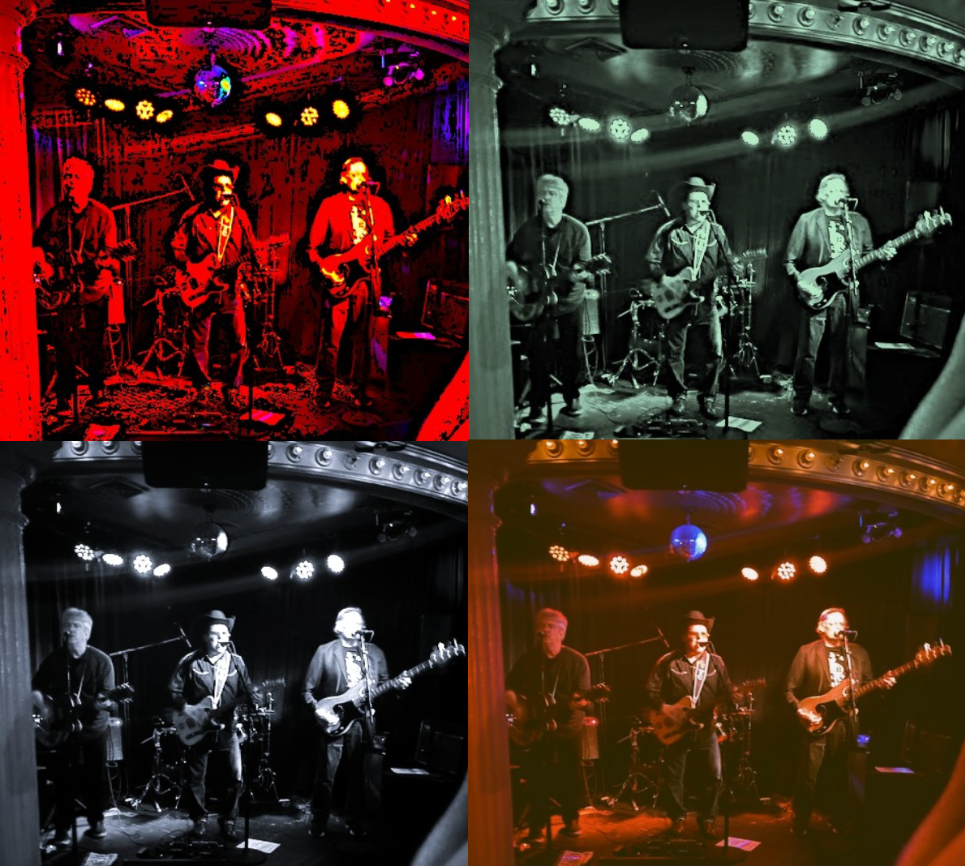
MY #NYC 1.1 June 2025: “There are no easy answers to elongated questions. So try and keep an eye out and be open to suggestions…” John Joseph Lydon
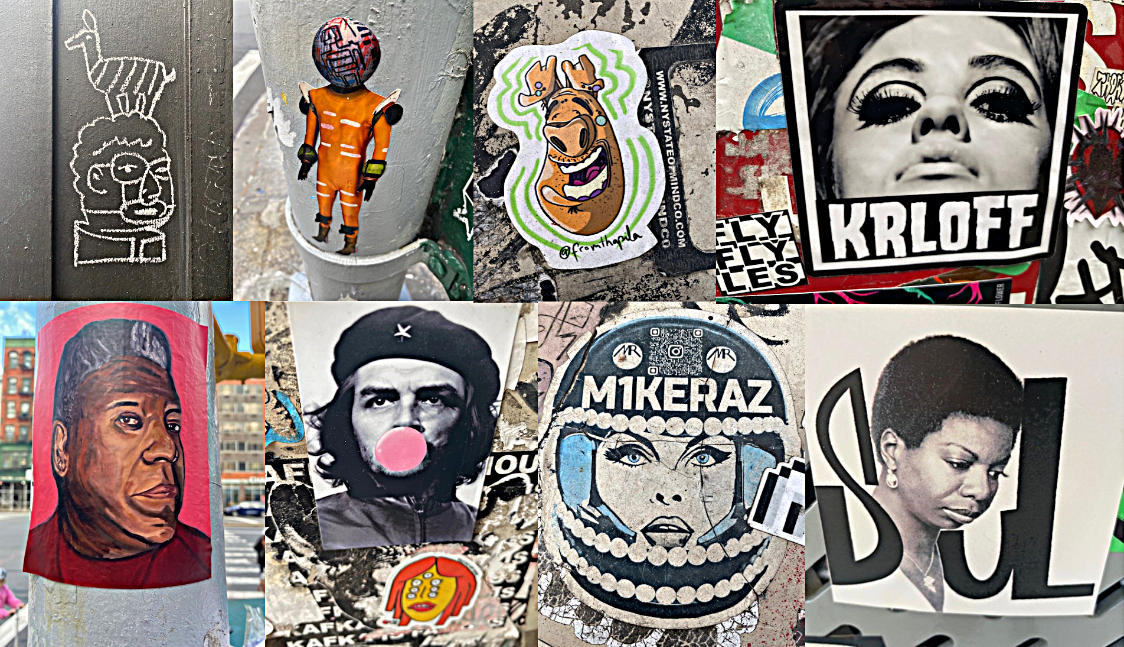
𝐌𝐘 #𝐍𝐘𝐂 𝐌𝐚𝐲 𝟑𝟏 𝟐𝟎𝟐𝟓: “𝐃𝐚𝐧𝐜𝐞 𝐬𝐢𝐬𝐭𝐞𝐫 𝐝𝐚𝐧𝐜𝐞. 𝐅𝐞𝐞𝐥 𝐭𝐡𝐞 𝐫𝐡𝐲𝐭𝐡𝐦 𝐟𝐥𝐨𝐰 𝐢𝐧𝐭𝐨 𝐲𝐨𝐮𝐫 𝐬𝐨𝐮𝐥. 𝐈 𝐥𝐨𝐯𝐞 𝐭𝐨 𝐰𝐚𝐭𝐜𝐡 𝐲𝐨𝐮 𝐦𝐨𝐯𝐞. 𝐈 𝐥𝐨𝐯𝐞 𝐭𝐡𝐞 𝐰𝐚𝐲 𝐲𝐨𝐮 𝐝𝐚𝐧𝐜𝐞…” 𝐂𝐚𝐫𝐥𝐨𝐬 𝐇𝐮𝐦𝐛𝐞𝐫𝐭𝐨 𝐒𝐚𝐧𝐭𝐚𝐧𝐚 𝐁𝐚𝐫𝐫𝐚𝐠á𝐧 / 𝐓𝐨𝐦 𝐂𝐨𝐬𝐭𝐞𝐫 / 𝐍𝐝𝐮𝐠𝐮 𝐂𝐡𝐚𝐧𝐜𝐥𝐞𝐫 
MY #NYC 30.1 May 2025: If I could make a wish, I think I’d pass. Can’t think of anything I need No cigarettes, no sleep, No light, no sound. Nothing to eat, no books to read. Sometimes all I need is the air that I breathe, and to love you.” Mike Hazlewood / Albert Louis Hammond 
MY #NYC 30 May 2025: “I stood up to the powers that be… I stood up, ‘cause I needed to see…Voices in my head… can’t you see, it’s a rising tide…” Felice Rosser

𝐌𝐘 #𝐍𝐘𝐂 𝟐𝟕 𝐌𝐚𝐲 𝟐𝟎𝟐𝟓: “𝐓𝐡𝐫𝐨𝐮𝐠𝐡 𝐭𝐡𝐞 𝐦𝐢𝐫𝐫𝐨𝐫 𝐨𝐟 𝐦𝐲 𝐦𝐢𝐧𝐝, 𝐭𝐢𝐦𝐞 𝐚𝐟𝐭𝐞𝐫 𝐭𝐢𝐦𝐞, 𝐈 𝐬𝐞𝐞 𝐫𝐞𝐟𝐥𝐞𝐜𝐭𝐢𝐨𝐧𝐬 𝐨𝐟 𝐲𝐨𝐮 𝐚𝐧𝐝 𝐦𝐞, 𝐫𝐞𝐟𝐥𝐞𝐜𝐭𝐢𝐨𝐧𝐬 𝐨𝐟 𝐭𝐡𝐞 𝐰𝐚𝐲 𝐥𝐢𝐟𝐞 𝐮𝐬𝐞𝐝 𝐭𝐨 𝐛𝐞…” 𝐋𝐚𝐦𝐨𝐧𝐭 𝐃𝐨𝐳𝐢𝐞𝐫, 𝐁𝐫𝐢𝐚𝐧 𝐇𝐨𝐥𝐥𝐚𝐧𝐝, 𝐄𝐝𝐰𝐚𝐫𝐝 𝐉𝐫. 𝐇𝐨𝐥𝐥𝐚𝐧𝐝 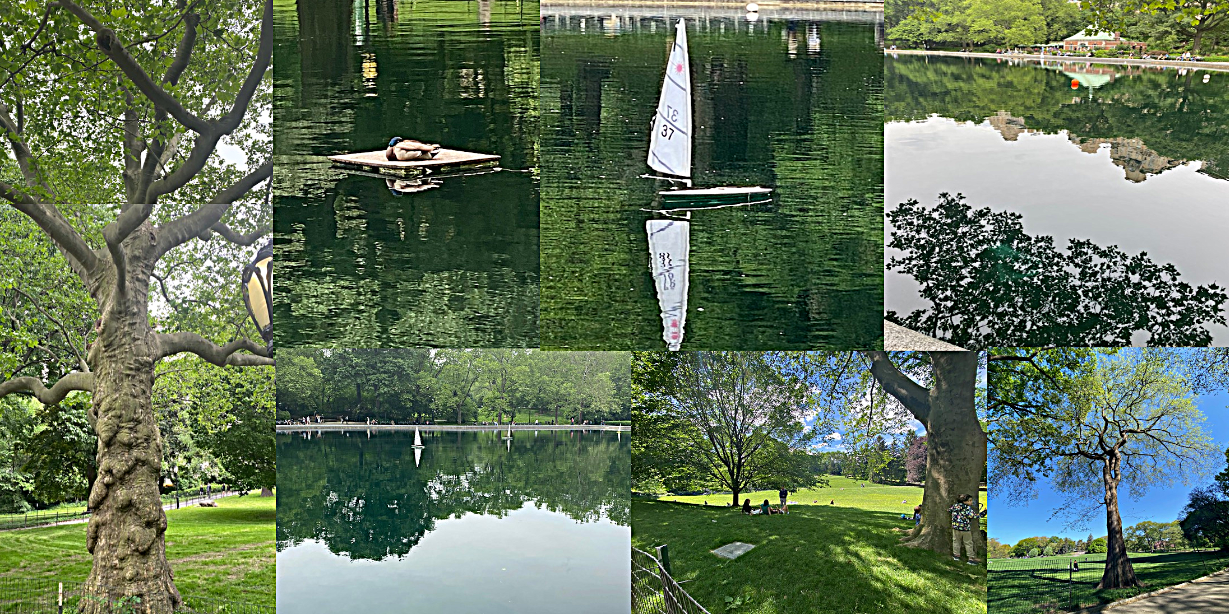
MY #NYC 26 May 2025: “I can’t forget the impression you made. You left a hole in the back of my head. I don’t like hiding in this foliage and peat. It’s wet and I’m losing my body heat. The cassette played poptones…” John Joseph Lydon 
MY #NYC 25.1 May 2025: “As the trees reached their hands to the heaven and the watchman began to stare, I saw the two rainbows laying across the highway, and I dare not to stare. So can you come out tonight? I got a ride on a satellite. It’s a secret for you I’ve been creating…” William Earl Collins 
MY #NYC 25 May 2025: “People were dancin’ like there’s no tomorrow, Meat City Finger lickin’, chicken pickin’ Meat City, shook down U.S.A….” John Winston Lennon 
MY #NYC 21 May 2025: “Come on out of your dreams. And wake up from your reverie. Time is here don’t go to sleep. Streets are running on the brink…” Beck Hansen 
MY #NYC 20.1 May 2025: “If I could read your mind love, what a tale your thoughts could tell Just like a paperback novel, the kind the drugstore sells. When you reach the part where the heartaches come the hero would be me. Heroes often fail, and you won’t read that book again…” Gordon Meredith Lightfoot 
MY #NYC 19.1 May 2025: “I play the street life. Because there’s no place I can go. Street life. It’s the only life I know. Street life. And there’s a thousand cards to play…” Will Jennings / Joe Sample 
MY #NYC 19 May 2025: Dis Is Da Drum…. Herbert Jeffrey Hancock 
MY #NYC 10.1 May 2025: “Oh, I just want to hear girls talk. I got a loaded imagination being fired by girls talk. But I can’t say the words you want to hear. I suppose you’re going to have to play it by ear. Right here and now…” Declan McManus 
MY #NYC 10.2 May 2025: “She makes me feel like I’m the only man for her in this world. Now maybe it’s the way that my girl walk… maybe it’s the way that my girl talk. Oh yes she makes me feel like I’m a king. That’s the kind of love that my girl bring. Oh yeah-e, yeah-e, yeah-e…” Gregory Isaacs 
MY #NYC 9 May 2025: “You’re the kind of person that I’ve been dreaming of. You’re the kind of person that I always wanted to love. And when I first seen you walk right through that bar door. And I seen those suit and tie johns buy you one drink, and then buy you some more I had a… I knew you had that crazy feeling” Lewis Allen Reed 
MY #NYC 8 May 2025 “Whenever dark has fallen you know the spirit of the party starts to come alive. Until the day is dawning you can throw out all the blues and hit the city lights. ‘Cause there’s music in the air and lots of lovin’ everywhere, so gimme the night…” George Benson 
MY #NYC 4 May 2025: “Make no mistake about it. Things ain’t what they seem. I’m gonna scream and shout it. This is just a dream…” Keith Richards 
MY #NYC 3 May 2025: Let’s see action. Let’s see people. Let’s see freedom. Let’s see who cares. Take me with you. Peter Dennis Blandford Townshend 
MY #NYC 1.4 May 2025: “Why in the world are we here? Surely not to live in pain and fear. Why on earth are you there? When you’re everywhere. Come and get your share…” John Winston Lennon 
MY #NYC 1.3 May 2025: “Live your life, and just be yourself. ‘Cause you’re somebody special, somebody loves your life….” will.i.am / Carlos Humberto Santana Barragán 
MY #NYC 1.2 May 2025: “I hear voices, I see people. I hear voices of many people… Sayin’ everything is everything…” Donny Edward Hathaway 
MY #NYC 1.1 May 2025: “You can understand everything’s to share. Let your spirit dance brothers everywhere. Let your head be free, turn the wisdom key, find it naturally – see you’re lucky to be. Dig this sound It¨ªs been round and round and round.” Carlos Humberto Santana Barragán 
𝐌𝐘 #𝐍𝐘𝐂 𝟐𝟗.𝟐 𝐀𝐩𝐫𝐢𝐥 𝟐𝟎𝟐𝟓: “𝐍𝐨𝐰 𝐞𝐯𝐞𝐫𝐲𝐭𝐡𝐢𝐧𝐠 𝐢𝐬 𝐥𝐨𝐯𝐞𝐥𝐲. 𝐒𝐨 𝐝𝐨𝐧’𝐭 𝐩𝐮𝐭 𝐲𝐮 𝐭𝐫𝐮𝐬𝐭 𝐢𝐧𝐧𝐚 𝐟𝐚𝐥𝐬𝐞 𝐩𝐫𝐨𝐩𝐡𝐞𝐜𝐲. 𝐃𝐢𝐬 𝐚 𝐝𝐞 𝐄𝐝𝐥𝐞𝐲 𝐒𝐡𝐢𝐧𝐞 𝐚𝐧𝐝 𝐒𝐭𝐞𝐯𝐢𝐞, 𝐲𝐨𝐮 𝐦𝐢𝐠𝐡𝐭 𝐰𝐨𝐧𝐝𝐞𝐫. 𝐒𝐭𝐚𝐧𝐝 𝐟𝐢𝐫𝐦 𝐭𝐨 𝐚𝐥𝐥 𝐭𝐡𝐨𝐬𝐞 𝐰𝐡𝐨 𝐟𝐞𝐞𝐥 𝐜𝐨𝐧𝐜𝐞𝐫𝐧. 𝐂𝐚 𝐰𝐡𝐞𝐧 𝐲𝐨𝐮 𝐜𝐚𝐧’𝐭 𝐬𝐞𝐞 𝐭𝐡𝐞 𝐥𝐢𝐠𝐡𝐭… 𝐲𝐨𝐮 𝐦𝐮𝐬𝐭 𝐬𝐞𝐞 𝐭𝐡𝐞 𝐑𝐨𝐛𝐢𝐧𝐬 𝐢𝐧 𝐟𝐥𝐢𝐠𝐡𝐭. 𝐋𝐢𝐟𝐞 𝐢𝐬 𝐣𝐮𝐬𝐭 𝐚 𝐦𝐚𝐭𝐭𝐞𝐫 𝐨𝐟 𝐭𝐢𝐦𝐞 𝐨𝐫 𝐬𝐩𝐚𝐜𝐞.. 𝐒𝐨 𝐚𝐥𝐥 𝐭𝐡𝐨𝐬𝐞 𝐰𝐡𝐨 𝐡𝐚𝐯𝐞 𝐭𝐨 𝐟𝐚𝐜𝐞 𝐬𝐨𝐫𝐫𝐨𝐰…𝐬𝐡𝐚𝐥𝐥 𝐨𝐧𝐥𝐲 𝐡𝐚𝐯𝐞 𝐭𝐨 𝐰𝐚𝐢𝐭 ‘𝐭𝐢𝐥𝐥 𝐭𝐨𝐦𝐨𝐫𝐫𝐨𝐰…” 𝐒𝐭𝐞𝐯𝐥𝐚𝐧𝐝 𝐇𝐚𝐫𝐝𝐚𝐰𝐚𝐲 𝐌𝐨𝐫𝐫𝐢𝐬 
MY #NYC 29.1 April 2025: “New York… like a scene from all those movies. But you’re real enough to me. There’s a heart… that lives in New York…” Benny Gallagher / Graham Lyle 
MY #NYC 29 April 2025: “Dance little sister, dance with your missed her, saw that I kissed her, heard that he dissed her, she’s a fighter, cigarette lighter, lighter getting lighter, mystery writer…” Tomaso John 
MY #NYC 25 APRIL 2025: “Life is pleasure life is pain, homes are lost to eminent domain…walk down the aisle be my bride…stick your tongue out open wide…” Tomaso John

MY #NYC 24 APRIL 2025: “Pretty woman, won’t you pardon me? Pretty woman, I couldn’t help but see. Pretty woman, you look lovely as can be. Are you lonely just like me? Rawwwwr….” Roy Kelton Orbison 
MY #NYC 22.1 APRIL 2025: “I saw her, yeah I saw her with her black tongue tied ‘round the roses. Fist pounding on a vending machine. Toy diamond ring stuck on her finger. Hey, my sun eyed girl…” Beck David Hansen 
MY #NYC 22 APRIL 2025 “Shoulda took a picture. Something I could keep. Buy a little frame. Something cheap. For you…” David Robert Jones 
MY #NYC 20 April 2025: “Don’t these city lights, light these streets to life? All these crazy nights bring us together…We’re supposed to be a land of liberty and those city lights to blaze forever…” Lewis Allan Reed 
MY #NYC 19 April 2025: “I was alone and content in my world. Dancing on air. You sent to me a message that said ‘I like your style’…” Patricia Lee Smith

MY #NYC 18 April 2025: “I see us in the park strolling the summer days of imaginings in my head. And words from our hearts told only to the winds, felt even without being said…” Stevland Hardaway Morris

MY #NYC 17 April 2025 “There she was just a-walkin’ down the street, singin’ ‘Do wah diddy diddy dum diddy do’. Snappin’ her fingers and shufflin’ her feet, singin’ ‘Do wah diddy diddy dum diddy do’. She looked good (Looked good). She looked fine (Looked fine). She looked good, she looked fine and I nearly lost my mind…” Ellie Greenwich / Jeff Barry

MY #NYC 15 April 2025: “I’m starting with the man in the mirror, I’m asking him to change his ways…”Siedah Garrett / Glen Ballard 
MY #NYC 15 April 2025: “Daily records. Just want to be making daily records. Try to avoid the bad news in the letters…” Peter Dennis Blandford Townshend
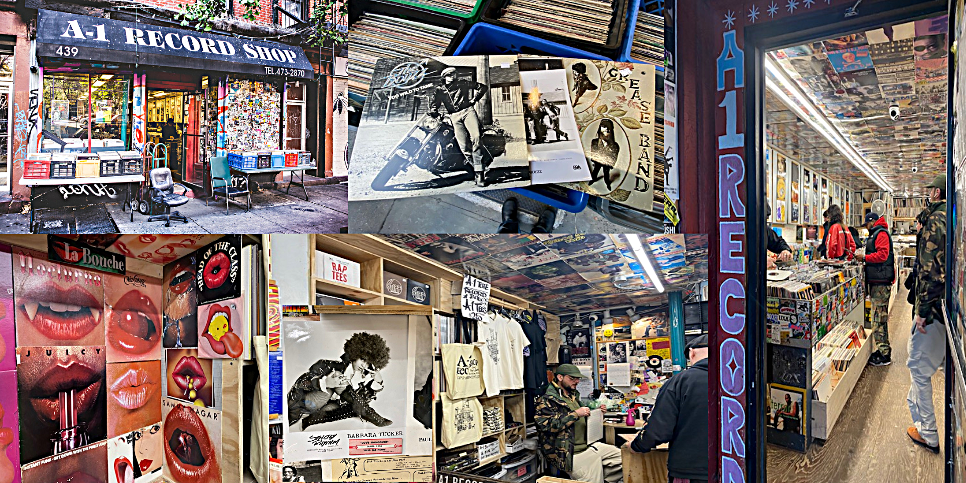
MY #NYC 10 April 2025: “But today there is no day or night. Today there is no dark or light. Today there is no black or white, only shades of gray…” Cynthia Weil / Barry Mann

MY #NYC 7 April 2025: “Lemon, see-through in the sunlight. She wore lemon but never in the daylight…” Paul David Hewson 
MY #NYC 30 March 2025: “You see I met a devil named Buena, Buena and since I met the devil I ain’t been the same…” Mark Sandman 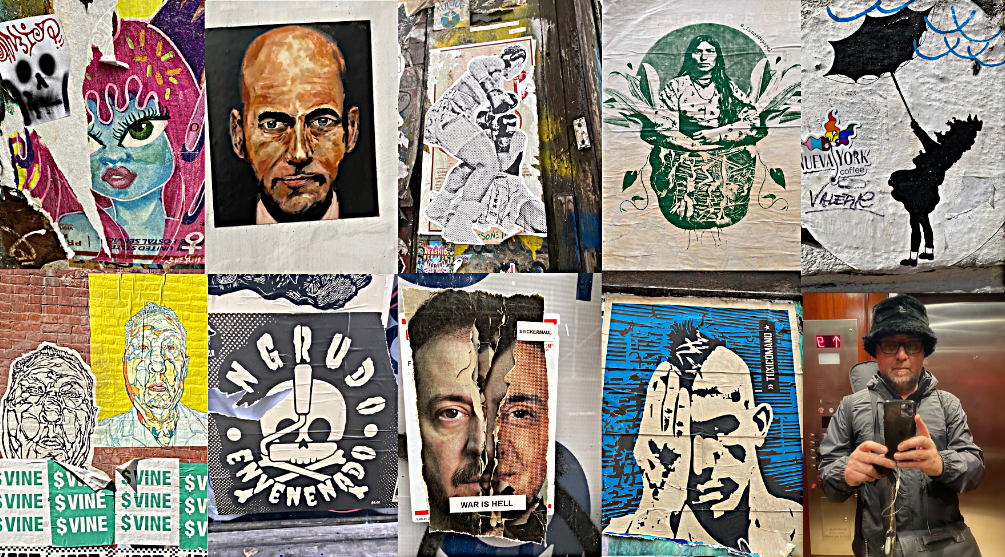
MY #NYC 29.1 March 2025: Cost of an iced coffee with a shot of expresso and a designer chocolate chip cookie downtown NYC $14.25 (tip included). Watching pretty girls pass me by: priceless…. 
MY #NYC 30 March 2025: I got nothing to eat in this old house. I gotta go out and catch a mouse. I can’t be wrong so I gotta be right. Your skills are highly specialized. But still that girl can magnetize. You sense the hunger in her eyes… strike or be stricken. Eat or be eaten…” James Newell Osterberg Jr.

MY #NYC 27 March 2025: “I’ll say goodbye to all my sorrow. And by tomorrow I’ll be on my way, I guess the Lord must be in New York City. Ain’t it wonderful to be where I’ve always wanted to be? I’ll breathe free, here in New York City…” Harry Edward Nilsson III 
MY #NYC 26 March 2025: “I’m a silhouette not a soldier. I’m a dilletante who pulled one over the leaders and Japanese cedars who cede their power to the bottom feeders…” Tomaso John 
MY #NYC 22 March 2025: “In New York freedom looks like too many choices. In New York I found a friend to drown out the other voices. Voices on the cell phone. Voices from home. Voices of the hard sell. Voices down the stairwell in New York. Just got a place in New York…” Paul David Hewson 
MY #NYC 20 March 2025: “You’ve heard of Radio Ethiopia? Well, I’m Radio Brooklyn!” Lewis Allan Reed 
MY #NYC 19 March 2025 ”All the majesty of a city landscape. All the soaring days in our lives. All the concrete dreams in my mind’s eye. All the joy I see thru’ these architect’s eyes…” David Robert Jones 
MY #NYC 17 March 2025: “They call you ecstasy. Nothing ever sticks to you. Not velcro, not scotch tape. Not my arms dipped in glue.” Lewis Allan Reed 
MY #NYC 16 March 2025: “I’ll be your mirror, reflect what you are, in case you don’t know. I’ll be the wind, the rain and the sunset, the light on your door to show that you’re home…” Lewis Allan Reed 
MY #NYC 13 2025: “Time after time those fanatical minds try to rule all the world. Telling us all its them who’s in charge of it all. I’ve got a tricked out magic stick that will make them all fall. We’ve got the power now that’s where it belongs…” Wayne Michael Coyne 
MY #NYC 11 March 2025: “Ah, it’s a happy time inside my mind. When a melody does find a rhyme says to me I’m comin’ home to stay, oh Lord, home to stay…” Timothy Charles Buckley 
MY #NYC 10 March 2025: “Standing in the shadow of another man. Lonely as the streets pass me by. Life ain’t under pressure ’cause I got a plan, starin’ at myself in the eye…” Stefani Joanne Angelina Germanotta 
MY #NYC 8 March 2025: “When that fat old sun in the sky is falling…summer evening birds are calling… and if you see, don’t make a sound, pick your feet up off the ground…” David Jon Gilmour 
My #NYC 8 March 2025: “Well, I’m an animal, something like a cannibal. I’m very flammable and partially programmable. Centuries of overuse, now I wear it nice and loose…” Anthony Kiedis 
MY #NYC 7 March 2025: “While Mona Lisas and mad hatters… sons of bankers, sons of lawyers…turn around and say good morning to the night…for unless they see the sky…but they can’t and that is why… they know not if it’s dark outside or light…” Bernard John Taupin 
MY #NYC 1 March 2025: “When your imagination has too much to say… when the chill of the night meets the sweat of the day….and you have trouble understanding what other people have to say, you’d better hang on to your emotions…” Lewis Allan Reed 
MY #NYC 27.2 February 2025: “I don’t know where the sunbeams end, and the star lights begin. It’s all a mystery. And I don’t know how a man decides, what’s right for his own life. It’s all a mystery” Wayne Michael Coyne 
MY #NYC 25.3 February 2025 “I know an angel on the east side of Heaven who lives in a first story room. We meet on a rooftop and dream in the dark, when the lights of New York are in bloom. All through the daytime it’s the same old Manhattan, but evening again sets me free…” John Scott Totter / Harry Lillis “Bing” Crosby 
MY #NYC 25.1.2025 “They say that heaven is 10 zillion light years away… and just the pure at heart will walk her righteous streets someday…” Stevland Hardaway Morris 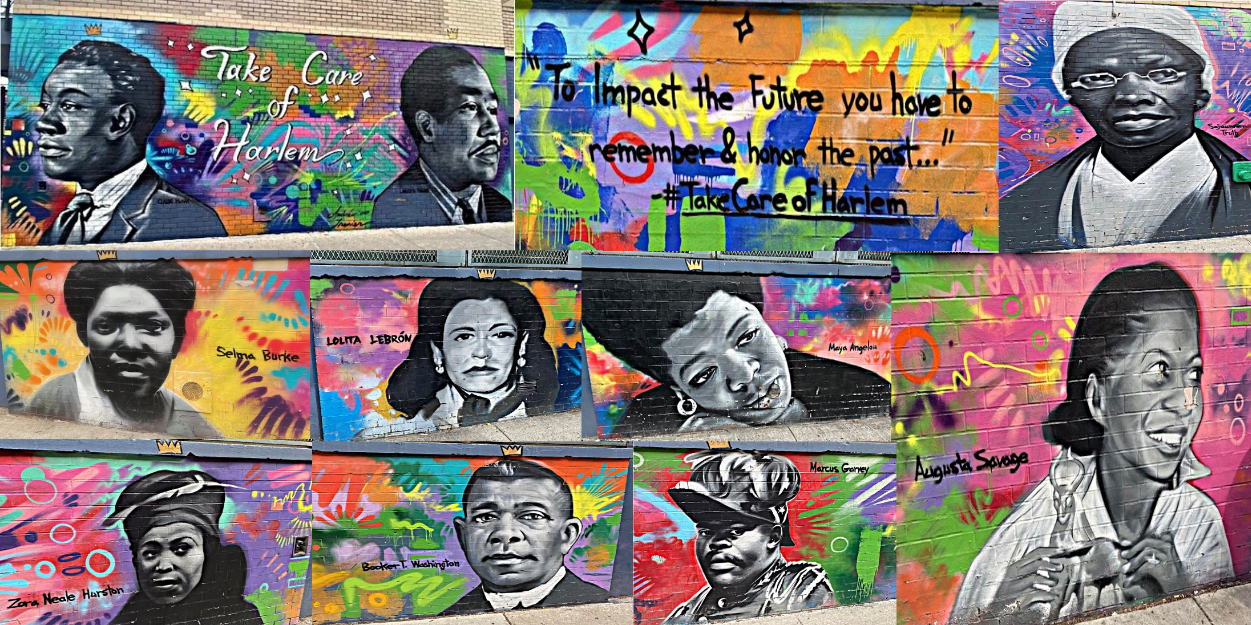
MY #NYC 25.2.2025 “As around the sun the earth knows she’s revolving… As now can’t reveal the mystery of tomorrow… until the rainbow burns the stars out in the sky… until the ocean covers every mountain high…until we dream of life and life becomes a dream…” Stevland Hardaway Morris 
MY #NYC 21.2.2025 “And it’s just like the ocean under the moon…it’s the same as the emotion that I get from you…you got the kind of lovin’ that can be so smooth… gimme your heart, make it real…or else forget about it…” Robert Kelly Thomas / Carlos Humberto Santana Barragán 
MY #NYC 24.1.2025 “There was China in her eyes, in a silk and velvet disguise. She was moving’ like a lady, looking’ like a dragon princess…” Paul Lorin Kantner 
MY NYC 18 February 2025: 𝐃𝐀𝐕𝐈𝐃 𝐂. 𝐆𝐑𝐎𝐒𝐒 & 𝟏𝟒𝟒 𝐋𝐈𝐕𝐄 𝐀𝐓 𝐒𝐈𝐋𝐕𝐀𝐍𝐀 𝐇𝐀𝐑𝐋𝐄𝐌 𝐌𝐚𝐜 𝐆𝐨𝐥𝐥𝐞𝐡𝐨𝐧 / 𝐓𝐫𝐮𝐦𝐩𝐞𝐭, 𝐒𝐜𝐚𝐭 𝐕𝐨𝐜𝐚𝐥𝐬; 𝐑𝐞𝐠𝐠𝐢𝐞 𝐒𝐲𝐥𝐯𝐞𝐬𝐭𝐞𝐫 / 𝐃𝐫𝐮𝐦𝐬, 𝐃𝐚𝐯𝐢𝐝 𝐓𝐚𝐲𝐥𝐨𝐫 / 𝐓𝐫𝐨𝐦𝐛𝐨𝐧𝐞, 𝐒𝐜𝐚𝐭 𝐕𝐨𝐜𝐚𝐥 𝐄𝐟𝐟𝐞𝐜𝐭𝐬; 𝐃𝐚𝐯𝐢𝐝 𝐂 𝐆𝐫𝐨𝐬𝐬 𝟔-𝐒𝐭𝐫𝐢𝐧𝐠 𝐁𝐚𝐬𝐬 & 𝐄𝐟𝐟𝐞𝐜𝐭𝐬.

MY #NYC 16 February 2025: “Incense and peppermints, meaningless nouns. Turn on, tune in, turn your eyes around. Look at yourself, look at yourself, yeah, girl…” Timothy Gilbert, John Carter 
MY #NYC 15 February 2025 “They sentenced me to 20 years of boredom, for trying to change the system from within. I’m coming now to reward them. First we take Manhattan… then we take Berlin…” Leonard Norman Cohen

MY #NYC 14 February 2025 “Hey now, you got me by the tongue. I feel like, there’s nowhere I belong. And they’re working it pretty hard. And they’re selling it by the yard. But it’s more than I can afford…” David Gray

𝗠𝗬 #𝗡𝗬𝗖 𝟰 𝗙𝗲𝗯𝗿𝘂𝗮𝗿𝘆 𝟮𝟬𝟮𝟱 “𝗜 𝘄𝗮𝗻𝗻𝗮 𝗿𝗲𝗮𝗰𝗵 𝗼𝘂𝘁 𝗮𝗻𝗱 𝘁𝗼𝘂𝗰𝗵 𝘁𝗵𝗲 𝗳𝗹𝗮𝗺𝗲 𝘄𝗵𝗲𝗿𝗲 𝘁𝗵𝗲 𝘀𝘁𝗿𝗲𝗲𝘁𝘀 𝗵𝗮𝘃𝗲 𝗻𝗼 𝗻𝗮𝗺𝗲…” 𝗣𝗮𝘂𝗹 𝗗𝗮𝘃𝗶𝗱 𝗛𝗲𝘄𝘀𝗼𝗻

MY #NYC 3 February 2025 “And the sign said, “the words of the prophets are written on the subway walls, in tenement halls… and whispered in the sounds of silence…” Paul Simon

MY #NYC 30 January 2025 “And I can’t look down, from Central Park to Shanty Town. I always heard that crazy sound, from New York to Shanty Town… James Osterberg 
MY #NYC 28 January 2025 “New York City is a friendly old town, from Washington Heights to Harlem on down…there’s a-mighty many people millin’ all around…. Robert Allen Zimmerman 
MY #NYC 27 January 2025 “In a catacomb or cave of endless drawings… prehistoric or religious… your accomplishments prodigious… seeking out the perfect tone…” Lewis Allen Reed

MY #NYC 18 January 2025: “I’m doing fine up here, on cloud nine…listen, one more time…” Norman Whitfield / Barry Strong 
MY #NYC 16 January 2025 “Sons of the silent age stand on platforms blank looks and notebooks, sit in back rows of city limits… Sons of the silent age don’t walk, they just glide in and out of life…” David Robert Jones

MY #NYC 14 January 2025 “The traffic on Canal Street’s so noisy it’s a shock. And someone’s shooting fireworks or a gun on the next block. And I wanna hooky wooky with you…” Lewis Allen Reed

MY #NYC 9 January 2025 “Shoulda took a picture. Something I could keep. Buy a little frame. Something cheap. For you. Everyone says hi…” David Robert Jones 
MY #NYC 6 January 2025 “There is no political solution to our troubled evolution…we are spirits in the material world, are spirits in the material world…” Gordon Matthew Sumner 
MY #NYC 6 January 2025 “Sometimes in winter… forgotten memories remember you behind the trees…” Steve Katz 
MY #NYC 2 January 2025: “Did you ever take a look to see whose left around? Everyone I thought was cool is six feet underground! I’m still alive and well, still alive and well… Every now and then I know it’s kinda hard to tell… but I’m still alive and well…” John Dawson Winter lll
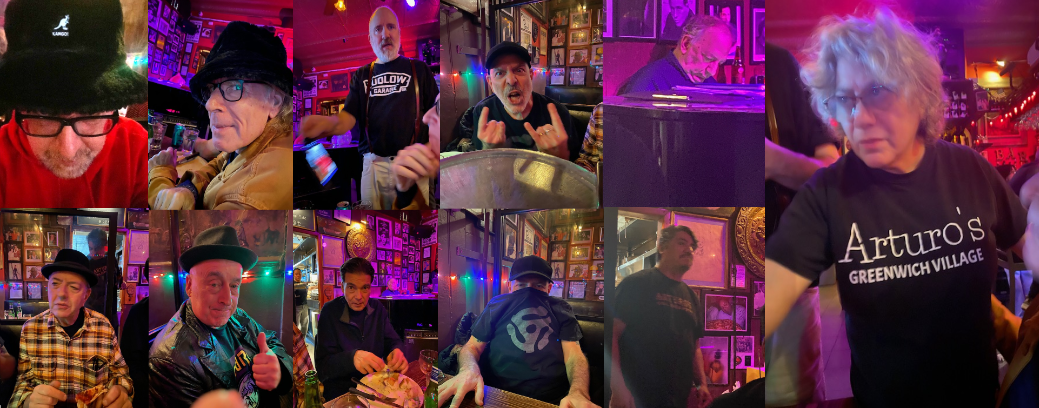
𝑰𝑻 𝑾𝑨𝑺 𝑨 𝑽𝑬𝑹𝒀 𝑬𝑳𝑬𝑪𝑻𝑹𝑶-𝑫𝑼𝑩 𝒀𝑬𝑨𝑹… 𝑻𝒉𝒂𝒏𝒌𝒔 𝒕𝒐 𝒂𝒍𝒍 𝒘𝒉𝒐 𝒄𝒂𝒎𝒆 𝒐𝒖𝒕 𝒂𝒏𝒅 𝒔𝒖𝒑𝒑𝒐𝒓𝒕𝒆𝒅 𝑺𝒑𝒂𝒈𝒉𝒆𝒕𝒕𝒊 𝑬𝒂𝒔𝒕𝒆𝒓𝒏 𝑬𝒍𝒆𝒄𝒕𝒓𝒐 𝑫𝒖𝒃 𝒘𝒉𝒆𝒕𝒉𝒆𝒓 𝒚𝒐𝒖 𝒘𝒆𝒓𝒆 𝒂𝒘𝒂𝒓𝒆 𝒐𝒇 𝒊𝒕 𝒐𝒓 𝒏𝒐𝒕… … 𝒎𝒐𝒓𝒆 𝒓𝒊𝒅𝒅𝒖𝒎 ‘𝒏’ 𝒇𝒖𝒏𝒌 𝒄𝒐𝒎𝒊𝒏’ 𝒊𝒏 2025…. 𝑫𝒊𝒈 𝑲𝒊𝒍𝒊𝒎𝒂𝒏𝒋𝒂𝒓𝒐 𝒇𝒓𝒐𝒎 𝑳𝑰𝑽𝑬 𝑨𝑻 𝑮𝑹𝑬𝑬𝑵 𝑲𝑰𝑳𝑳 𝑺𝑬𝑺𝑺𝑰𝑶𝑵𝑺 / 𝑫𝒆𝒄𝒆𝒎𝒃𝒆𝒓 2024 𝑪𝒐𝒍𝒍𝒆𝒄𝒕𝒊𝒗𝒆 𝑪𝒐𝒎𝒑𝒐𝒔𝒊𝒕𝒊𝒐𝒏 𝒃𝒚 𝑺𝒂𝒍 𝑪𝒂𝒕𝒂𝒍𝒅𝒊, 𝑫𝒊𝒓𝒌 𝑫𝒓𝒂𝒛𝒆𝒏 𝑫𝒂𝒘𝒐𝒖𝒅 𝑲𝒓𝒊𝒏𝒈𝒍𝒆, 𝑺𝒑𝒐𝒏𝒕𝒂𝒏𝒆𝒐𝒖𝒔
VIDEO LINK: https://youtu.be/A3wArLVm5VA?si=ZQajcvavplQHzagZ

MY NYC 30 December 2024: “Time, he’s waiting in the wings. He speaks of senseless things. His script is you and me, boy. Time, he flexes like a whore. Falls wanking to the floor. His trick is you and me, boy…” David Robert Jones

MY NYC 24 December 2024: “Outside my window is a tree. There only for me. And it stands in the grey of the city…” Gail Collins / Felix Pappalardi 
MY NYC 10 December 2024: “Well I got a foggy notion, do it again. Over by the corner, do it again. I got my calamine lotion baby, do it again…” Sterling Morrison, Doug Yule, Maureen Tucker & Hy Weiss

MY #NYC 8 December 2024: “We understand your paranoia. But we don’t wanna play your game You think you’re cool and know what you are doing… 666 is your name…” John Winston Lennon

’74 @ 50! Rod Stewart / Faces Live! Coast to Coast Overture and Beginners. Bassist Tetsu Yamauchi /Rod Stewart / Smiler. Bassists Spike Heatley, Willie Weeks, Ronnie Wood / Ronnie Wood / I’ve Got My Own Album to Do. Bassists Willie Weeks, Pete Sears, with Mick Taylor / Rolling Stones / It’s Only Rock and Roll. Bassists Bill Wyman, Willie Weeks, with Keith Richards, Mick Taylor / Bill Wyman / Monkey Grip. Bassist Wiliam George Perks RAF O.H.M.S.

MY #NYC 21 November 2024: “Imagine how my daddy felt, in your jet black suspender belt. Seventeen years old. He’s touching sixty-four. You got legs right up to your neck. You’re making me a physical wreck. I’m talking to you…hot legs…” Sir Roderick David Stewart CBE 
𝑴𝒀 #𝑵𝒀𝑪 20 𝑵𝒐𝒗𝒆𝒎𝒃𝒆𝒓 2024: 𝑨𝒎 𝑰 𝑮𝒓𝒐𝒐𝒗𝒊𝒏’ 𝒀𝒐𝒖… 𝑨𝒍𝒊 𝑩𝒂𝒃𝒂 & 𝑮𝒓𝒐𝒖𝒑𝒆 𝑴𝒐𝒕𝒊 𝑳𝒊𝒗𝒆 𝒂𝒕 𝑳𝒂 𝑫𝒊𝒂𝒈𝒐𝒏𝒂𝒍 𝒊𝒏 𝑯𝒂𝒓𝒍𝒆𝒎 𝑵𝒀𝑪 𝒘𝒊𝒕𝒉 𝒔𝒑𝒆𝒄𝒊𝒂𝒍 𝒈𝒖𝒆𝒔𝒕𝒔 𝑫𝒂𝒗𝒊𝒅 𝑪. 𝑮𝒓𝒐𝒔𝒔 & 𝑴𝒂𝒄 𝑮𝒐𝒍𝒍𝒆𝒉𝒐𝒏!

MY #NYC 18 November 2024 “A race of angels bound with one another. A dish of dollars laid out for all to see. A tower room at Eden Rock… his golf at noon for free… Brooklyn owes the charmer under me..” Walter Carl Becker / Donald Jay Fagan 
MY #NYC 17 November 2024: “I used to think maybe you loved me now baby I’m sure. And I just can’t wait till the day when you knock on my door. Now every time I go for the mailbox, gotta hold myself down. ‘Cause I just can’t wait till you write me you’re coming around. I’m walking on sunshine….” Kimberly Rew

MY #NYC 11 November 2024 “He was the king of trees, keeper of the leaves. A deep green god of young… love stained memory.” Steven Demetre Georgiou 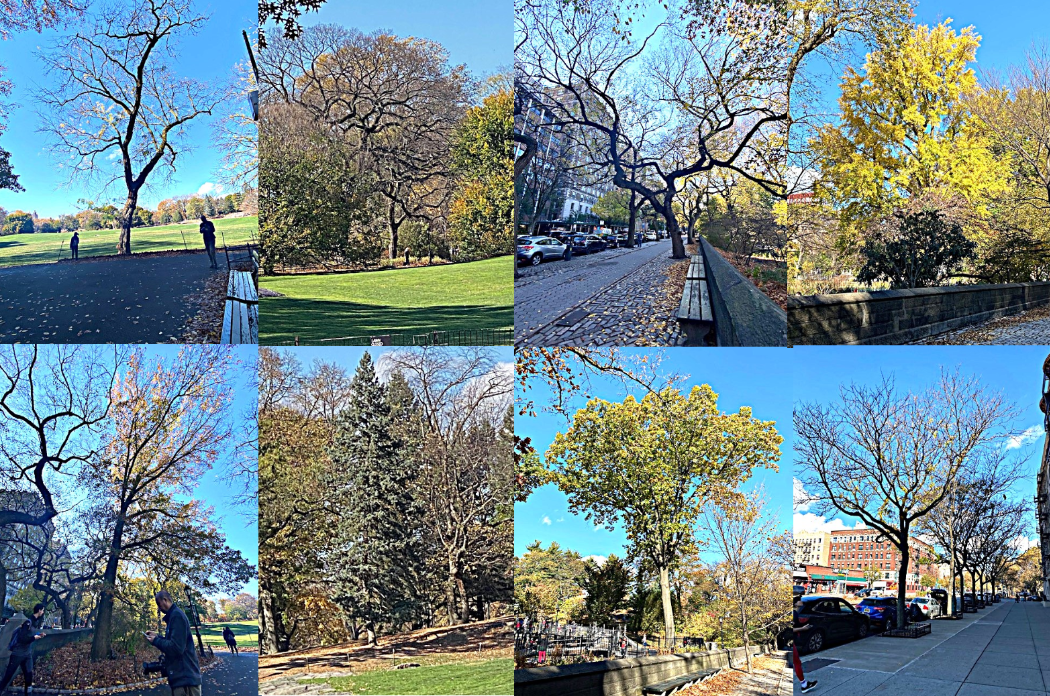
MY #NYC 10 November 2024 “…I’m just a raindrop in a bucket. A coin dropped in a slot. I am an empty house on Weed Street. Across the road from a vacant lot… You know life is what you make of it… so beautiful or so what…” Paul Simon 
MY #NYC 9 November 2024 “…half of the time we’re gone, but we don’t know where and we don’t know why….the only living boy in New York…” Paul Simon

MY #NYC 6 November 2024: “Tigers don’t growl much unless they’re bored. Or unless attempting to tackle the jungle, Lord… whose face tigers never see… but who still hands out their stripes judiciously…” Sananda Maitreya 
MY #NYC 4 November 2024: “If I could live to be several hundred, I could take a walk and really wander. All my ghosts on every sea, in every land…” Charles Michael Kittridge Thompson IV 
MY #NYC 3 November 2024: “I’m a road runner, baby. Can’t stay in one place too long. I’m a road runner, baby. You might look at me and I’ll be gone…” Lamont Dozier, Brian Holland, Edward Jr. Holland 
MY #NYC 1 November 2024: “There’s a downtown fairy singing out “Proud Mary” as she cruises Christopher Street. And some Southern Queen is acting loud and mean where the docks and the badlands meet… this Halloween is something to be sure…” Lewis Allan Reed 
MY #NYC 30 October 2024 “November and more, as I wait for the score, they’re telling me forgiveness is the key to every door…” Phil Lesh / Bobby Peterson 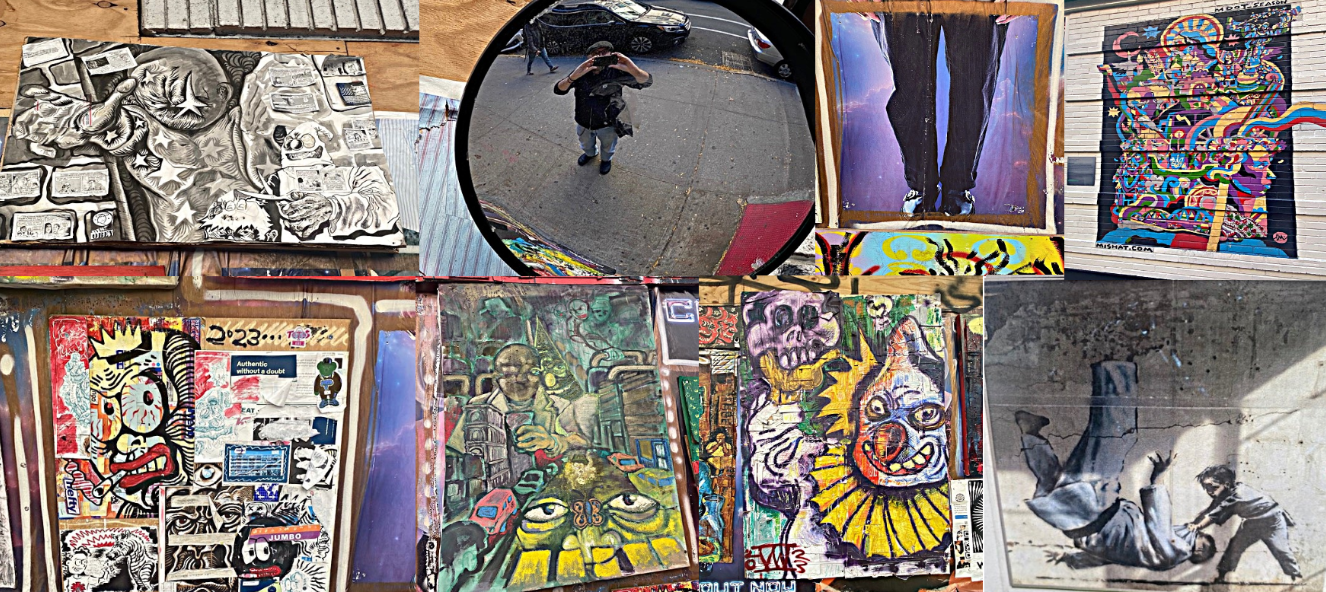
MY #NYC 24 October 2024 “Smiling faces sometimes… they don’t tell the truth. Smiling faces, tell lies and I got proof…” Norman Whitfield 
MY #NYC 22 October 2024 “Now I own the key to the door, the kingdom of heaven lies inside…I love visions of you…” Jah Wobble 
MY NYC 10.10.24: 144 Live at Silvana Harlem “It’s about that time…”

MY NYC 4 October 2024 “Life’s a game of give and take. Early in the morning get your concentration
on your meditation to take the right direction…” Carlos Santana / Michael Shrieve 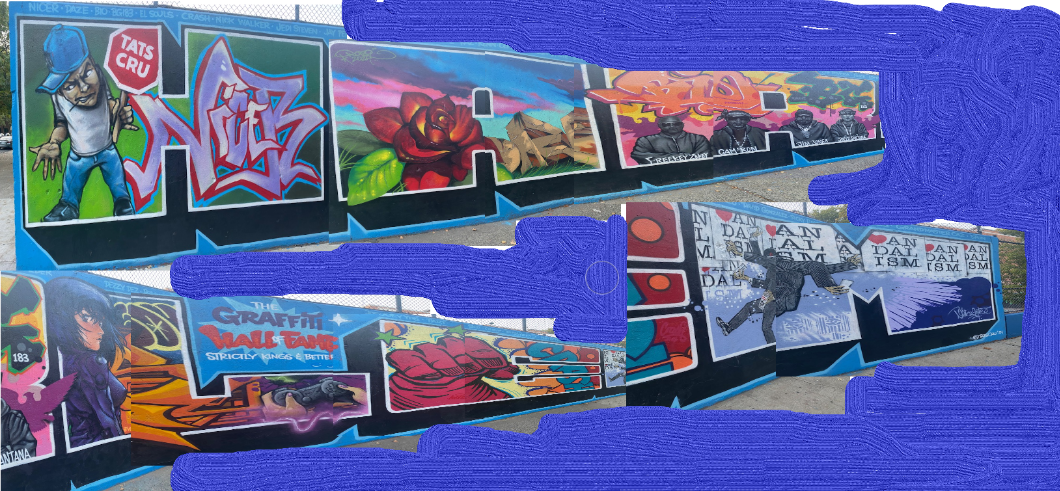
MY #NYC 26 September 2024 “I’ve been talking to myself…because I’m a little bit crazy…” Stu Richards / Magic Forest Live at AH Presents Otto’s Shrunken Head NYC

MY #NYC 24 September 2024 “My friends are so alarming, my lover’s never charming… life’s just a cocktail party on the street…” Sir Michale Phillip Jagger / Keith Richards

MY NYC 23 September 2024 “In my sensations, I believe that I was born with the things that I know. I want to talk like I read…” David Byrne 
MY NYC 22 September 2024 “Something in the night. Something in the day. There’s slaughter in the air protest on the wind… Someone else inside me…someone could get skinned. Someone fetch a priest, you can’t say no to the Beauty and The Beast…” David Robert Jones 
MY NYC 19 September 2024 “Only renting. Only subletting. Fences mending. Just pretending. Reality bending. Signal sending. Patent pending. Just inventing. Let’s go ‘round the bend. Get in trouble again. Make a commotion. Drink a love potion. Sweet ’til the bitter end…” John Doe / Exene Cervenka 
MY N.Y.C. 16 September 2024 “I am a tree, I show my age when I don’t cry. I have the leaf that will fall off when wind blows by…I am a tree fruitless and free…” Robert Pollard 
MY #NYC 15 September 2024 “Speedy Marie, ahead of the now. She’s better built that’s how. She’s built for speed, Speedy Marie…” Frank Black 
MY NJ/NYC 15 September 2024 “One day you turn around and it’s summer. Next day you turn around and it’s fall…as a man who has always had the wand’ring ways, now I’m reaching back for yesterdays. ‘Til a long-forgotten love appears and I find that I’m sighing softly as I near September, the warm September of my years…” Sammy Cahn as sung by Francis Albert Sinatra

MY NYC 13 September 2024 “I wanna be somebody’s Chelsea, somebody’s world. Somebody’s day and night, one and only girl. A part of a love story that never has an end. You know that’s what every woman wants to be somebody’s Chelsea…” Reba McEntire 
MY #NYC 13 September 2024 “The streets of New York, a maze made of iron and stone. A labyrinth complete, with edges that cut through the bone.” Willie Nile 
MY NYC 13 September 2024 “Autumn in New York, why does it seem so inviting?” Vernon Duke 
MY #NYC 8 September 2024: “We’re so young and pretty, we’re so young and clean. So many things that we have never seen. Let’s move from Ohio, sell this dam’ old store. Big Apple dreamin’ on a wooden floor…” Vincent Furnier 
MY NYC 8 September 2024: “Safe in my garden, an ancient flower blooms and the scent from its nature slowly squares my room…” John Edmund Andrew Phillips

MY #NYC 5 September 2024 “Can we fix our nation’s broken heart? Are we brave enough to try? Can we fix our nation’s broken heart and leave a better world behind?” Stevland Hardaway Morris 
MY #NYC 4 September 2024: Groovin’ on the 2 & 4 in 4/4! Diggin’ FAITH NYC Live at Silvana Harlem NYC…. 
MY NYC 3 September 2024 “I wanna run, I want to hide I wanna tear down the walls that hold me inside… I wanna reach out and touch the flame where the streets have no name… Paul David Hewson 
MY #NYC 2 September 2024 “There is a rose in Spanish Harlem. A red rose up in Spanish Harlem. It is the special one, it’s never seen the sun. It only comes out when the moon is on the run. And all the stars are gleaming. It’s growing in the street right up through the concrete. But soft and sweet and dreaming…” Ben E. King / Jerry Leiber

MY #NYC 30 August 2024 “Through a fault of our designing we are lost among the windings of these metal ways…” Brian Peter George Jean-Baptiste de la Salle Eno

MY #NYC 29 August 2024 “There ain’t no reason to tell no lie when you’re young and you’ve got a lot of pie… now I slink around like a killer…the things they say are just a lot of filler…” James Newell Osterberg Jr.
My NYC 27 August 2024 “Nothing is planned by the sea and the sand…” Peter Dennis Blandford Townshend 
MY #NYC 26 August 2024 “Emancipate yourselves from mental slavery, none but ourselves can free our minds…” Marcus Garvey / Robert Nesta Marley 
MY #NYC 26 August 2024 “Want some whiskey in your water? Sugar in your tea? What’s all these crazy questions they’re askin’ me? This is the craziest party that could ever be… don’t turn on the lights… ’cause I don’t wanna see! Mama told me not to come! She said ‘that ain’t the way to have fun… son.’ Uh-huh!” Randy Newman 
MY #NYC 2018 “The return of the Thin White Duke throwing darts in lovers’ eyes…” David Bowie Is Here Bleecker/Lafayette St. Subway Exhibit 
MY NYC 25 August 2024 “And when I see the sign that points one way… the lot we used to pass by every day. Just walk away, Renée you won’t see me follow you back home… the empty sidewalks on my block are not the same, you’re not to blame… just walk away…” Brown / Calilli / Sansone 
MY NYC 22 August 2024 lORRAINE lECKIE lIVE @ ilon Art Gallery hARLEM nYC Ilon Art Gallery 
MY #NYC 22 August 2024 “No, it ain’t judgement day. No, it ain’t Armageddon… it’s just the apple stretching and yawning, just morning. New York City putting it’s feet on the floor…” Grace Jones 
MY #NYC 20 August 2024 “Everyone’s feeling pretty, it’s hotter than July… though the world’s full of problems, they couldn’t touch us even if they tried…from the park, I hear rhythms, Marley’s hot on the box… tonight, there will be a party…on the corner at the end of the block” Stevland Hardaway Morris 
MY #NYC 14 August 2024: “In the heart of Harlem, a renaissance blooms. A symphony of voices, in countless rooms. Jazz and blues, a soulful sound where creativity and spirit abound, Langston’s dreams deferred, Hughes’ rivers flow, in every word, a people’s echo…” (author unknown) 
MY #NYC 12 August 2024 “The heart is a bloom, shoots up through the stony ground. There’s no room no space to rent in this town. It’s a beautiful day. Sky falls, you feel like. It’s a beautiful day. Don’t let it get away…” Paul Hewson 
MY NYC 10 August 2024 “I play the street life because there’s no place I can’t go. Street life, it’s the only life I know. Street life, you can run away from time. Street life, for a nickel, for a dime…” Wilber Jennings 
MY NYC August 2024 Random images… 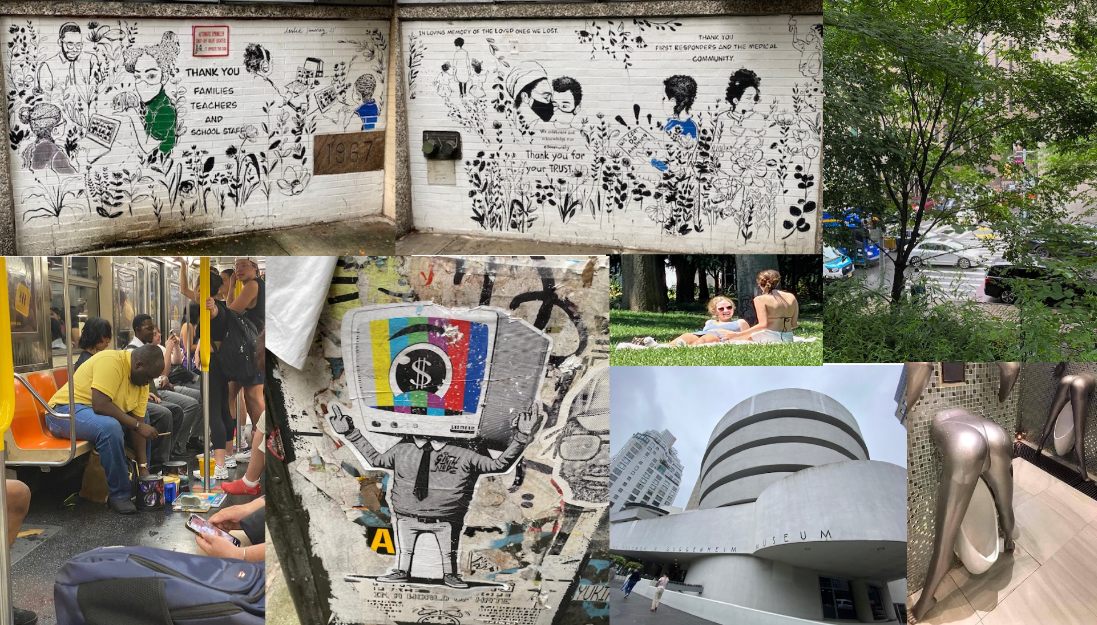
MY NYC 8 August 2024 “Flowers never bend with the rainfall…” Paul Simon 
MY #NYC 6 August 2024 “I’ve just seen a face, I can’t forget the time or place where we just met…” James Paul McCartney
MY NYC 4 August 2024 “If you want me to stay, I’ll be around today, to be available for you to see. But I am about to go and then you’ll know, for me to stay here, I got to be me…” Sylvester Stewart 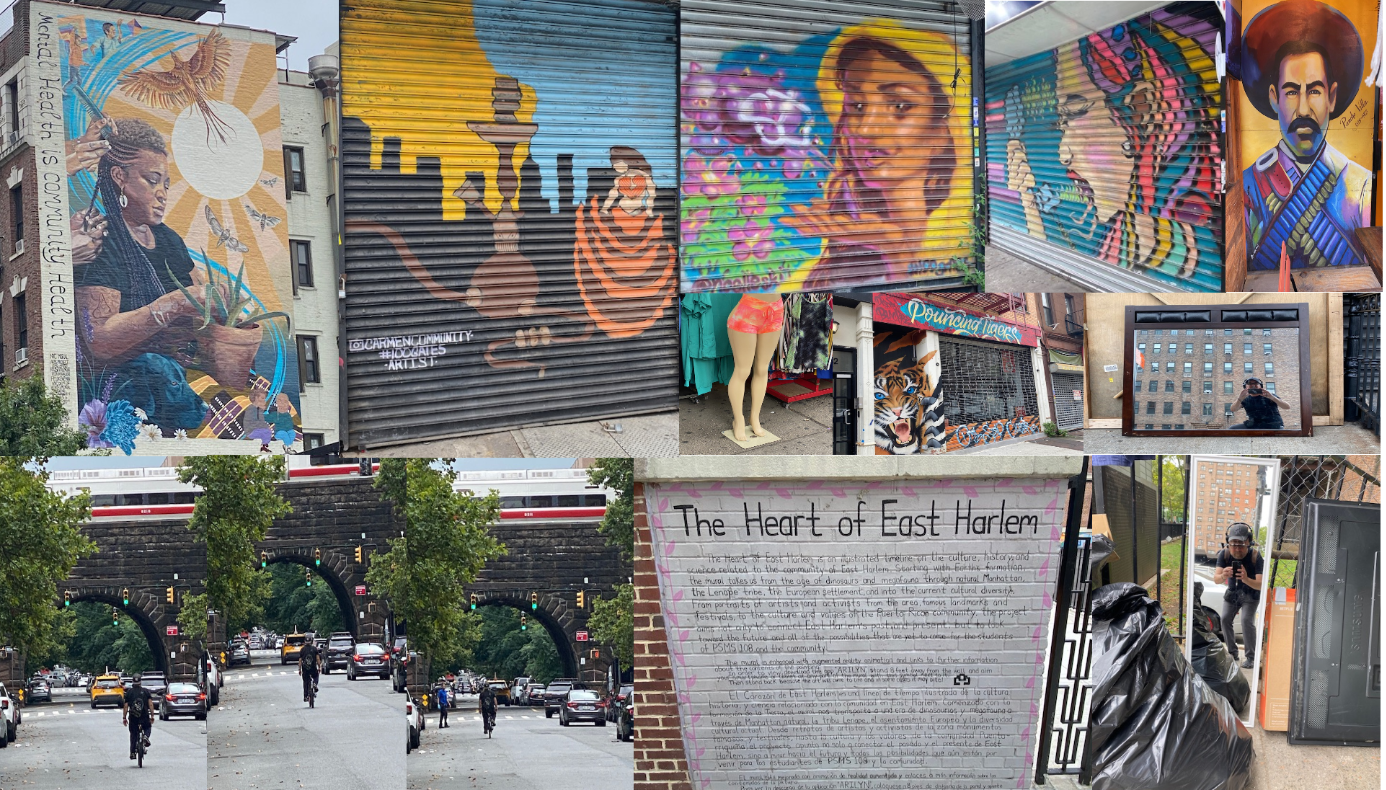
MY #NYC 20 July 2024 “Gone are the days, of the seek and the find. All in the name of easy come, easy go merry go round the mind. Step right up, catch it while you can, alligator hugger and the candy man…” Cris Jacobs 
MY #NYC 19 July 2024 “All the young girls love Alice…tender young Alice they say…if I give you my number, will you promise to call… wait ‘till my husband’s away…” Bernie Taupin 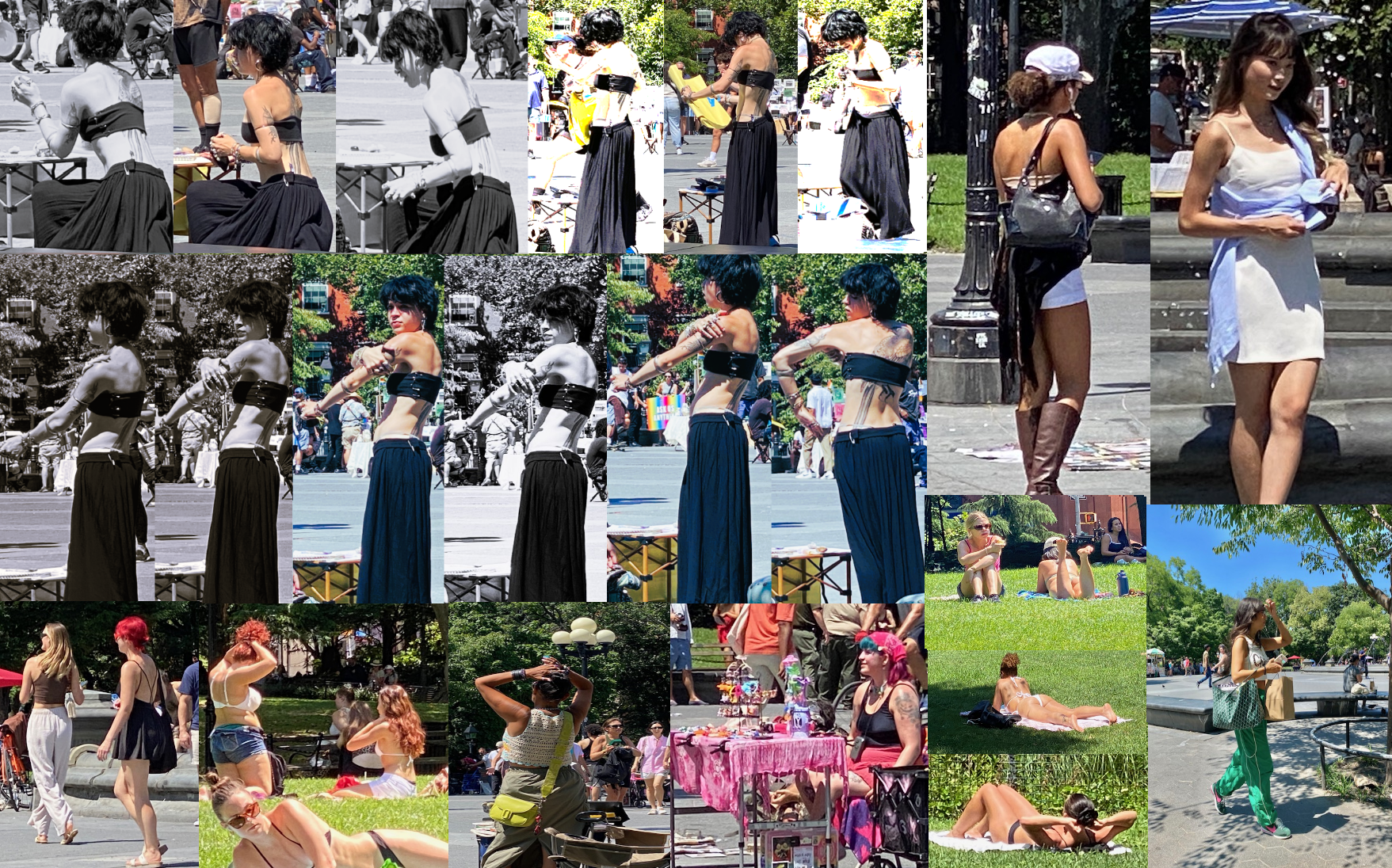
MY #NYC 18 July 2024 “Walk right out to the four-line track, there’s a camera rolling on her back… I sense a rhythm humming in a frenzy….girls on film, two minutes later…” Lebon / Taylor / Taylor / Taylor / Rhodes 
MY #NYC 14 July 2024 “I got the time. I got my feet. Let’s go hit the street. High in the city. I got my mace. You got your knife. You gotta protect your own life. I wanna stay alive in the city…” Lou Reed 
12 July 2024 MY #NYC “And undulating always, like the tide, the devil’s bride is calling all toward her skirt. And in the loving folds there we will hide inside from any would-be sneak attack until it’s safe to journey back…” Robert Pollard 
MY #NYC 3 July 2024 “I have a positive hot gift, want one? A scoffer’s clutch karma issue, a nursery whip for men who skip. Want one?” Robert Pollard 
28 June 2024 MY #NYC “With the sinking of the sun I’ve come to greet you. Clean your hands and go to sleep, confess the dreams of good and bad men all around…” Robert Pollard

MY #NYC 26 June 2024 “A live wire, barely a beginner, but just watch that lady go. She’s on fire, ’cause dancin’ gets her higher than anything else she knows…” David Lee Roth 
17 June 2024 MY NYC “Everywhere I go people want to know, who I am. So, I tell them. I am the Serene King in a half-asleep dream, waltz across the battlefield…” Robert Pollard 
4 June ’24 MY NYC “And I’m sitting on a bench in Coney Island…wondering, ‘where did my baby go?’ The fast times, the bright lights, the merry-go…” Taylor Swift / The National 
31 May 2024 MY NYC “Up Madison, down Park… each time I turn a corner, I walk a little faster, pretending life is sweet, ‘cause love’s around the corner…. I walk a little faster…” Tony Bennett 
30 May 2024 MY NYC “Oh, my nuclear baby. Oh, my idiot trance. All my idiot questions. Let’s face the music and dance…” – David Bowie 
30 May 2024 MY #NYC “There goes my hero, watch him as he goes. There goes my hero, he’s ordinary…” Dave Grohl 
MY N.Y.C. 30 May 2024 “I love women, I think they’re great. They’re a solace to the world in a terrible state. They’re a blessing to the eyes, a balm to the soul. What a nightmare to have no women in the world…” Lou Reed 
MY NYC 5/29/24 “I’m in a straightjacket… I’m in a padded cell…a new disease is running through my veins…” Stu Richards
“Mama pajama rolled out of bed, and she ran to the police station. When the papa found out he began to shout, and he started the investigation…” – Paul Simon

MY NYC 24 May 2024 “…kids you better look around. How long you think that you can run that body down? How many nights you think that you can do… what you been doing? Who, now who you foolin’ …” Paul Simon 
24 May 2024 MY N.Y.C. “Life, a transient odyssey, weaves a mysterious tapestry of moments that mold our very essence….”
Spaghetti Eastern Electro Dub Live @Silvana with MARK MURO in MY N.Y.C. HARLEM 24 May 2024 “If you’re tired of walkin’ around and getting nowhere, I know, there’s a path that’s leading towards the master. Love, devotion and surrender…” Carlos Santana 
MY #NYC 23 May 2024 After midnight, we’re gonna let it all hang out. We’re gonna cause talk and suspicion, give an exhibition, find out what it is all about…” JJ Cale 
MY #NYC 16 May 2024 Sign Language … 
MY #NYC 14 MAY 2024 “The king is gone, but he’s not forgotten. This is the story of a Johnny Rotten… it’s better to burn out than it is to rust…” Neil Young 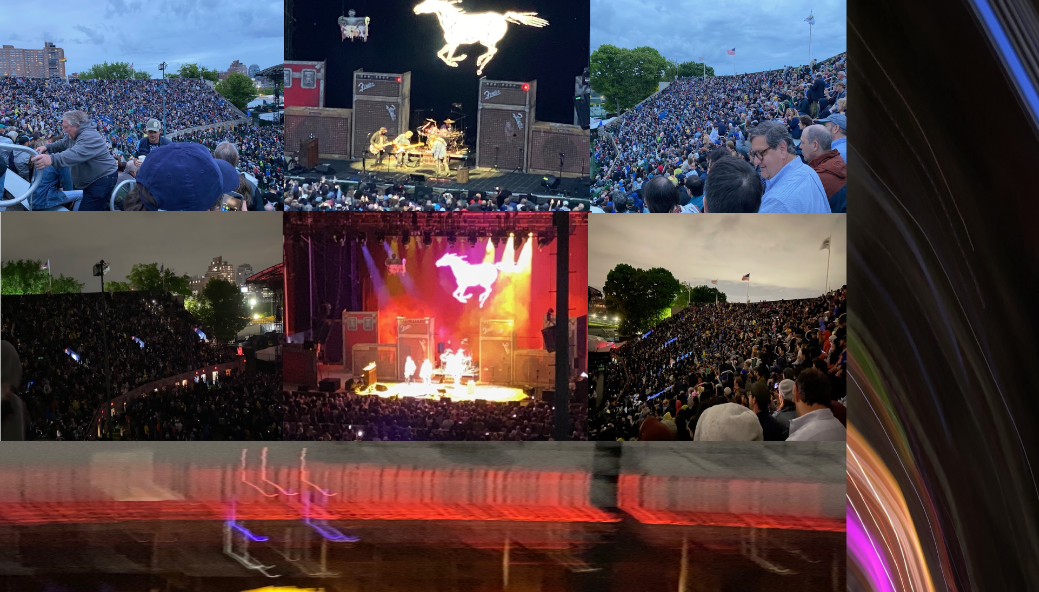
MY #NYC 12 May 2024 Paul Collins, Sal Maida’s Bottom’s Up Band live at Bowery Electric with Mike Fornatale, Dennis Diken, Dave Amels, Dave Foster… 
MY #NYC 8 May 2024: “We’ve got to judge the judge. We’ve got to find the finds. We’ve got to scheme the schemes. We’ve got to line the lines. Try to place the place where we can face the face…” Pete Townshend 
MY #NYC 8 May 2024: “Sign, sign. everywhere a sign. Blockin’ out the scenery, breakin’ my mind. Do this, don’t do that. Can’t you read the sign?” Five Man Electrical Band 
MY #NYC 7 May 2024 “See her picture in a thousand places, ‘cause she’s this year’s girl. You think you all own little pieces of this year’s girl…” Elvis Costello

MY #NYC 6 May 2024: “Now this is a song to celebrate the conscious liberation of the female state…” Annie Lennox 
MY #NYC 4 MAY 2024 “Somebody took the papers, and somebody’s got the key. But me, I’m down around the corner, you know, I’m lookin’ for Miss Linda Lee…” Lou Reed

MY #NYC 3 May 2024 “I’ll say goodbye to all my sorrow. And by tomorrow I’ll be on my way, I guess the Lord must be in New York City…” Harry Nilsson

MY #NYC 3 May 2024 “I know what I know. I’ll sing what I said. We come and we go. That’s a thing that I keep in the back of my head…” Paul Simon 
MY #NYC 2 May 2024 “I get all the news I need on the weather report… hey, I’ve got nothing to do today but smile. And here I am, the only living boy in New York…” Paul Simon

MY #NYC 1 May 2024 “For there’s Basie, Miller, Satchmo, and the king of all, Sir Duke. And with a voice like Ella’s ringing out, there’s no way the band could lose…” Stevie Wonder

MY #NYC 30 April 2024 “Watch out world, comin’ at you full throttle. Better check that sausage before you put it in the waffle. And while you’re at it, better check that batter, make sure the candy’s in the original wrapper…” Lou Reed 
MY #NYC 29 April 2024 “Well I’m beginning to see the light. Some people work very hard, but still they never get it right….” Lou Reed 
MY #NYC 4.27.24 “I have my books and my poetry to protect me. I am shielded in my armor…” Paul Simon

MY #NYC 26 April 2024: “I want the principles of a timeless muse. I want to eradicate my negative views. And get rid of those people who are always on a down…” Lou Reed

MY #NYC 4.25.24 “It’s a beautiful day in this neighborhood, a beautiful day for a neighbor. Would you be mine? Could you be mine? Please won’t you be my neighbor?” – Fred McFeely Rogers

MY #NYC 15 April 2024 ‘Twas a sunny day…not a negative word was heard from the people passing by. All the birds in the trees, and the radio’s singing songs, all the favorite melodies…” Paul Simon 
MY #NYC 8 April 2024 “Blue, blue, electric blue, that’s the color of my room, where I will live…waiting for the gift of sound and vision…” David Bowie

MY #NYC 5 April 2024 “Every day you’ve got to wake up and disappear behind your makeup. Take away your calendar watch and you can’t keep track until your heart attack…” Jimmy Destri

MY #NYC 4 April 2024 “In the big apple, scars embedded like tattoos. Ghetto love, protection from what’s coming at you. Keeping our heads up, maintaining self-esteem, and reminiscing on the Harlem Nights scene…” Luther Vandross 
MY #NYC 4 April 2024 In the Heights…. 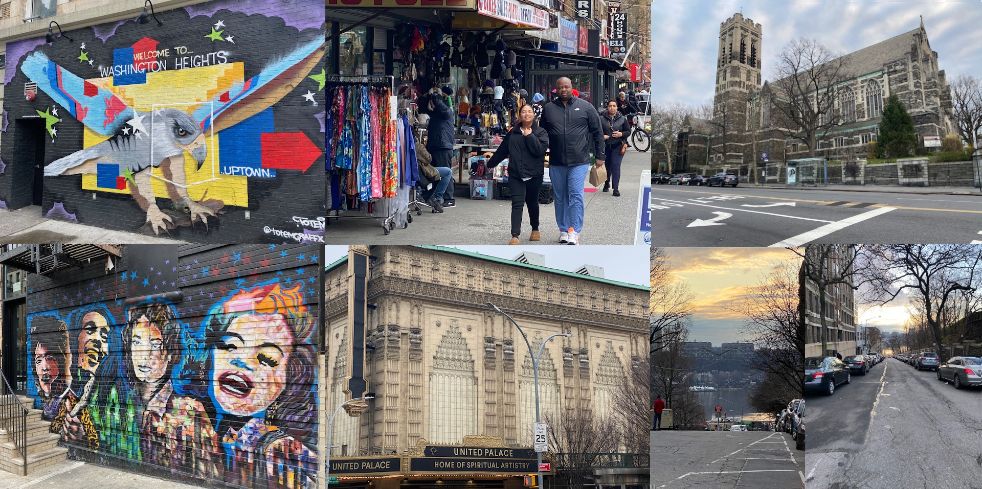
MY #NYC 4 April 2024 “I was staying at the Marriott, with Jesus and John Wayne. I was waiting for a chariot, they were waiting for a train…” Warren Zevon 
MY #NYC 1 April 2024 “Somebody took the papers. And somebody’s got the key. And somebody’s nailed the door shut that says, ‘hey, what you think that you see?” …” Lou Reed 
MY #NYC 30 March 2024 “Eh Cumpari, ci vo sunari. Can you dig it? Yes, I can. And I’ve been waiting such a long time. For Saturday…” – Robert Lamm 
MY #NYC 29 March 2024 “If you want me to stay, I’ll be around today, to be available for you to see. But I am about to go and then you’ll know, for me to stay here, I got to be me…” Sly Stone

MY #NYC 28 March 2024 “I’m going uptown to Harlem. If a taxi won’t take me, I’ll catch a train. I’ll go underground, I’ll get there just the same….” Duke Ellington / Nick Kenny 
MY #NYC 27 March 2024 “Is is. Therefore you are. I am. That I am. Let me be….” Leon Thomas
MY #NYC 21 March 2024 “Take a risk and listen to the radio, click your heels at the bi-polar disco. Fly down the villa destination sign, everybody feels the days but waits for summer nights…” Scott Weiland

MY #NYC 20 March 2024 “Caught between the twisted stars, the plotted lines, the faulty map that brought Columbus to New York…” Lou Reed

MY #NYC 19 March 2024 Three Views of a Secret… Jaco Pastorius 
MY #NYC 18 March 2024 “Woke up, it was a Chelsea morning, and the first thing that I heard, was a song outside my window, and the traffic wrote the words…” Joni Mitchell

MY #NYC 13 March 2024 “Mama’s got a lover, a painter I am told. She’s getting out of real estate, for the art scene down in old Soho…” Lou Reed 
MY #NYC 13 March 2024: “Ah, but remember that the city is a funny place, something like a circus or a sewer. And just remember, different people have peculiar taste, and the glory of love… might see you through…” Lou Reed
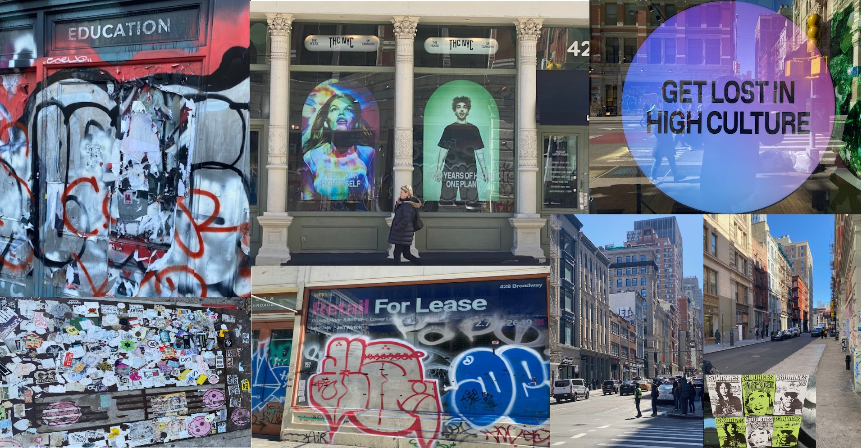
MY #NYC 12 March 2024: “You know the day destroys the night; night divides the day…” Jim Morrison 
MY #NYC 7 March 2024: “As the twilight sunburst gleams, as the chromium moon it sets, as I lose all my regrets, and set the twilight reeling…” Lou Reed 
MY #NYC 3 March 2024 “Oye cómo va. Mi ritmo. Bueno pa’ gozar…” Tito Puente 
MY #NYC 28 February 2024 “Old friends, old friends… sat on their park bench like bookends…” Paul Simon

MY #NYC 27 February 2024 “Man makes machines, to man the machines, that make the machines, that make the machines. And man and machine, will make a machine, to break the machines, that make the machines…” Pete Townshend 
MY #NYC 25 February 2024 “Brooklyn, Bronx, Queens and Staten, from the Battery to the top of Manhattan, Asian, Middle-Eastern and Latin, Black, White, New York you make it happen…” Beastie Boys

MY #NYC 23 February 2024 “I couldn’t escape this feeling with my China girl, I’m just a wreck without my little China girl…” Iggy Pop
MY #NYC 23 February 2024 “They fought with their words, their bodies and their deeds, doin’ the things that they want to…” Lou Reed

MY #NYC 18 February 2024 We’re an American brand…. Bleecker & Bowery 
MY #NYC 27 January 2024 “It is what you read when you don’t have to that determines what you will be when you can’t help it.” Oscar Wilde 
MY #NYC 14 January 2024 “I’ve got nothing to say but it’s okay, good morning, good morning, good…” John Lennon 
MY #NYC 13 January 2024 “…just a perfect day, drink Sangria in the park, and then later, when it gets dark, we go home…” Lou Reed 
MY #NYC 7 January 2024 “Rainy day, dream away, let the sun take a holiday…” Jimi Hendrix 
2021 – 2023
MY #NYC (June 2023) A Great Day in Harlem 1958 is a black-and-white photograph of 57 jazz musicians in Harlem, New York, taken by freelance photographer Art Kane for Esquire magazine on August 12, 1958 at 17 East 126th Street 
MY #NYC (31 December 2022) “Drop me off in Harlem, any place in Harlem There’s someone waiting there, who makes it seem like Heaven up in Harlem….”

MY #NYC 26 May 2022 “Eyes without a face / les yeux sans visage… I’m on a bus on a psychedelic trip reading murder books tryin’ to stay hip, I’m thinkin’ of you, you’re out there so, say your prayers…” Billy Idol

MY #NYC (17 January 2022) ‘Neath the halo of a streetlamp, I turned my collar to the cold and damp, when my eyes were stabbed by the flash of a neon light, that split the night, and touched the sound of silence….” Paul Simon

MY NYC 23 January 2024

MY #NYC (May 2022) “It’s up to you…New York, New York” A Mansion Diner denizen since I migrated to the Upper East Side in ’85… my sanctuary replete with black coffee, apple pie, and Sinatra on the sound system 24/7. A monument on York & 86th since June 1945…chatty waitresses, culinary anonymity, egalitarian reception no matter what condition I enter… says Ed Levine: “Diners are so important because they are the greatest bastions of civility, service, and dare I say grace available to all economic strata in this country.” 
MY #NYC 26 January 2022
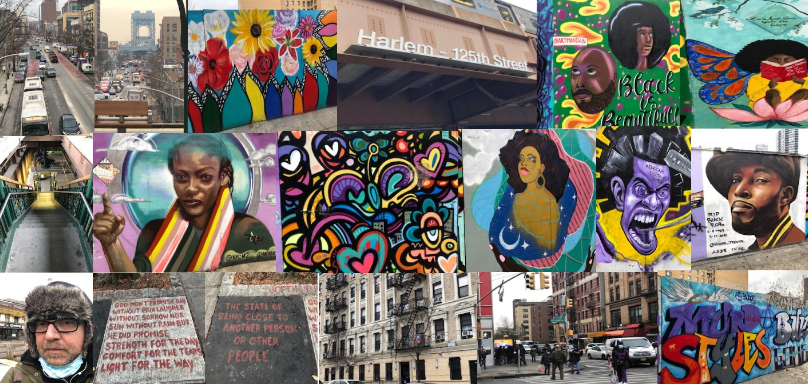
MY #NYC 1 February 2022 “And I’m laying out my winter clothes and wishing I was gone.. where the New York City winters aren’t bleedin’ me…leadin’ me…goin’ home…” Paul Simon

MY #NYC (May 14, 2022) “You don’t know what you’ll do until you’re put under pressure…across 110th Street is a hell of a tester…” Bobby Womack

MY #NYC 11 December 2023 “I think it’s the best, when I’m locked in the middle of New York city on Central Park ‘n’ West, I know, I know, I know, I know, I know it’s a mess, but you’ve got to be crazy to live in the city, and New York City’s the best….” Ian Hunter
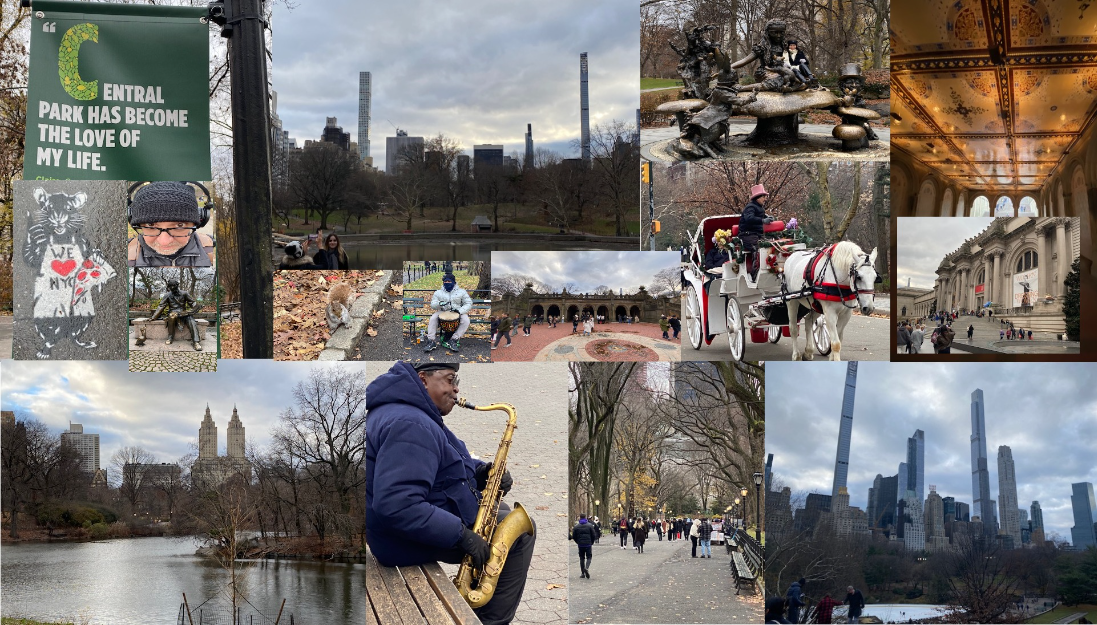
MY #NYC (April 2023) “Ask the angels who they’re calling, go ask the angels if they’re calling to thee, ask the angels while they’re falling, who that person could possibly be…” Dave Grohl

MY #NYC 9 December 2023…out on the edges they’re mixin’ the colors, some they don’t like it, but me I don’t mind… Iggy Pop

MY #NYC (July 2023) “Caught between the twisted stars, the plotted lines, the faulty map, that brought Columbus to New York…” Lou Reed 
MY #NYC 19 December 2023 “…everyone’s gazing at some body part. That’s the nature of art..” Iggy Pop 
MY #NYC 12 December 2023 “Until you’ve seen this trash can dream come true, you stand at the edge while people run you through, and I thank the Lord there’s people out there like you…” Bernie Taupin

MY #NYC 20 December 2023 “Sunday morning brings the dawn in, it’s just a restless feeling by my side…” Lou Reed

MY #NYC (November 16, 2023) Dusk on the Upper East Side NYC…

MY #NYC (November 2023) Morning on the Upper East Side…

MY #NYC 8 April 2023 “The traffic’s so noisy it’s a shock, sounds like fireworks or a gun on the next block, ah, hooky wooky with you…” Lou Reed 